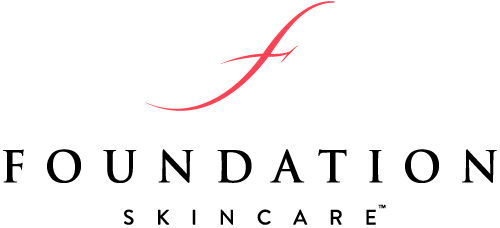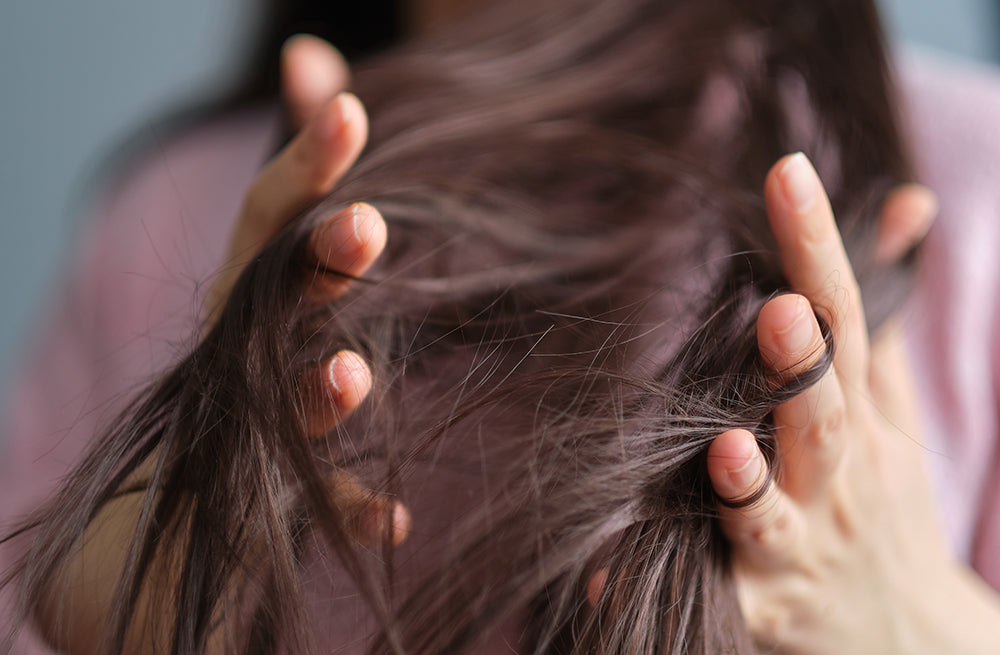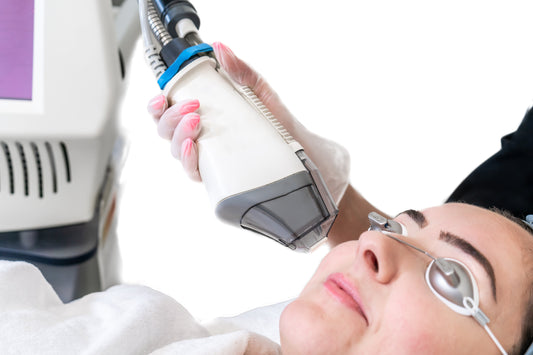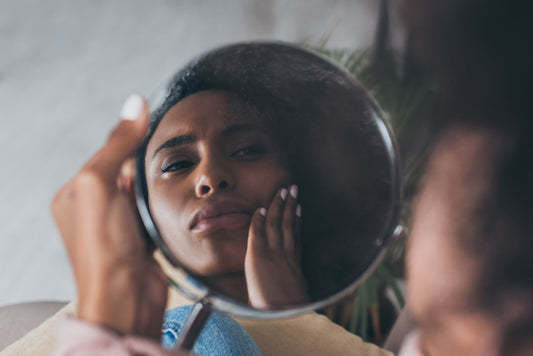From baldness being your maternal grandfather’s fault to shampooing every day to speed up growth, there are so many myths surrounding hair loss and hair growth. This makes it difficult to know what to do if you’re starting to experience some hair loss. Read on to find out what actually causes hair loss in men and women, when you should start hair growth treatments, and which myths you should leave behind.
What Causes Hair Loss in Men and Women?
It’s normal to shed around 50-100 hairs a day, but we often don’t notice because the hair loss doesn’t leave behind an obvious patch and there’s typically a new strand of hair ready to take an old strand’s place.1 But for some men and women, hair shedding isn’t the problem. A disruption occurs in the natural cycle of hair growth that prevents the hair from growing back and leads to more hair loss than usual. This can be an internal factor, like a hormonal imbalance; or it can be external, like overusing heat tools on your hair.
The main causes of hair loss in men and women include:
- Pattern baldness (androgenic alopecia) related to genetics
- Autoimmune disorders like alopecia areata
- Hormone imbalances
- Certain medications
- Anemia and thyroid disorders
- Chemical hair products like bleach and hair dye
- Aging
- Pregnancy
- Menopause
- Overstyling hair
- Too much vitamin A
- Sudden weight loss
- Nutritional deficiencies
When to Start Hair Growth Treatments
The best time to start hair growth treatments is at the first sign of thinning hair. As Dr. Anthony Nuara MD PhD FAAD explains, “It is much easier to maintain your hairline than it is to reverse it. That’s why we say it’s never too early to start using a supplement and serum in your hair care routine.”
One of the first steps you can take in supporting hair growth is to address nutritional gaps in your diet. Foundation Skincare’s UnTangled Supplement is a dermatologist-formulated non-prescription supplement designed to fight hair loss from the inside. It contains saw palmetto, which is proven to block a hormone called dihydrotestosterone (DHT) that is associated with hair loss. It also contains ingredients like vitamin C, marine collagen, and horsetail extract, which provide the building blocks your body needs to increase keratin production and revitalize hair growth.
While you’re supporting your hair growth cycle from the inside, it’s also helpful to use a topical product for direct contact with your follicles. Foundation Skincare’s Hair Serum is formulated with a blend of proven ingredients like Capixyl, Stimucap, and saw palmetto to fortify the follicles and cuticles and minimize hair breakage.
Other than hair serum, hair treatments to ask your dermatologist about (that require a prescription) include minoxidil or 5-alpha reductase blockers (like finasteride or dutasteride). These are popular hair loss treatments, but associated with some side effects. Minoxidil users typically experience an initial stage of shedding and finasteride is known to cause sexual side effects.
Common Myths About Hair Growth
Many myths about hair growth are the result of hair care products trying to sell you more products. Despite what you may have heard from well-meaning friends or magazines, promoting hair growth isn’t as easy as following “one quick fix.” It often requires a more comprehensive approach involving nutrition, lifestyle, sleep, and more. Investigate some of the most common hair loss myths to find out what really works, based on the facts.
Myth 1: You Should Shampoo Your Hair Once a Day
While everyone loves having clean hair, it’s important not to overdo it if you want to minimize hair loss. The only exception is if you struggle with dandruff, in which case daily washing is recommended. If you are starting to notice your hair thinning, daily washing with chemical-laden shampoos can make your hair brittle and prone to breakage by stripping your hair of its natural oils.
Myth 2: Stress Speeds Up Male Pattern Baldness
There is some evidence that links chronic stress to temporary hair loss, but not when it comes to male pattern baldness. Stress-induced hair loss includes telogen effluvium, in which stress basically presses pause on your follicles, trichotillomania, in which patients compulsively pull out their hair in response to stress, and alopecia areata, an autoimmune condition in which the immune system mistakenly attacks its hair follicles. Male pattern baldness, on the other hand, is not a temporary type of hair loss that resolves once the trigger is gone. It is the result of genetics, hormones, and aging, not stress.
Myth 3: Hair Restoration Treatments Don’t Help
Though pattern baldness is considered a permanent condition, there are treatments available that can slow its progress and even reverse baldness to a certain degree. It’s always best to address hair loss at the first sign of thinning, but even the Mayo Clinic agrees that the right product can help some people regrow their hair or slow the rate of hair loss or both.2 It’s also important to identify what type of hair loss you’re dealing with. If hormonal imbalances, nutritional deficiencies, or stress are contributing to temporary hair loss, you can take steps to resolve these issues and support your efforts with nutritional supplements and serums.
Foundation Skincare’s UnTangled Hair Supplement contains science-backed vitamins, minerals, acids, and plant extracts to help revitalize a stagnant hair growth cycle by giving your body the nutrients it needs to produce more keratin. The supplement not only addresses nutritional deficiencies, but it also addresses hormonal imbalances that contribute to male and female pattern baldness (DHT) by including the plant extract saw palmetto. Pair this supplement with Foundation Skincare’s Hair Serum for topical support directly to the follicles. This comprehensive approach helps to stimulate the hair growth cycle from the inside out.
Even more, there are a number of other hair restoration treatments that have been proven to help combat hair loss. In addition to supplements, serums, and prescription medication if needed, there are also hair transplant surgeries, platelet-rich plasma injections, and other solutions to discuss with your doctor.
UnTangled Essentials Kit
• Engineered to work in tandem
• Visibly fuller hair in 90 days
Myth 4: Tight Hair Styles Don’t Affect Hair Thinning
How you wear your hair may seem frivolous, but it can absolutely play a role in hair loss. In fact, this type of hair loss even has an official name: traction alopecia, and according to the American Academy of Dermatology Association, anyone who frequently wears a tightly pulled hairstyle can develop it.3
The types of hairstyles most likely to cause traction alopecia include buns, tight ponytails, cornrows, tightly braided hair, dreadlocks, and hair extensions or weaves. Some signs that your hairstyle is putting you at risk is a stinging or crusty scalp or pain when hair is pulled up.
Myth 5: Hair Serums Aren’t Necessary
No hair product is necessary, but the right one can make a world of difference. As mentioned above, Foundation Skincare’s Hair Serum nourishes follicles directly to help encourage the growth of strong, healthy hair. The serum is Minoxidil-free and powered by clinically-proven ingredients like Stimucap, which prevents further loss, and Capixyl, a peptide that stimulates growth and inhibits DHT. Like Capixyl, saw palmetto also inhibits DHT, the main contributor to male and female pattern baldness. When using this product, patients have shown improvement within 30 days and visible results within as little as 3 months. And when paired with UnTangled Hair Supplement, you can be sure you’re also encouraging new hair growth from within.
Myth 6: Sun Exposure Can Make You Bald
While it’s true that excessive sun exposure can damage the hair cuticle and cause dryness and frizz, it won’t make you bald.4 However, it is important to protect your scalp from sun exposure just like any other skin on your body. And you may even want to invest in hair SPF. According to one 2019 study, UV rays can damage hair just like the skin, potentially even damaging the hair follicle.5 In addition to sunscreen on your hair and scalp, you should always wear a hat or scarf in the sun for extra protection.
Key Takeaways
Now that you know the truth about hair growth and hair loss, you can start taking steps to preserve the hair you have and support new strands. Remember these fast facts:
- You don’t have to shampoo your hair every day; the natural oils in your hair actually help to prevent breakage.
- Stress may contribute to temporary types of hair loss, but not pattern baldness.
- Hair restoration treatments do exist, though some may work better than others.
- The best way to approach hair restoration is to begin treatment at the first sign of thinning to preserve the hair you have.
- Wearing a tight hairstyle every day may contribute to hair loss.
- Sun exposure won’t cause balding but it can damage your follicle and put your scalp at risk.
When addressing hair loss, do so from the inside out by targeting nutritional deficiencies and the follicle directly for the best effects. Learn more about Foundation Skincare’s UnTangled and Hair Serum and its hair serum results.
References:
-
https://www.aad.org/public/diseases/hair-loss/insider/shedding
-
https://www.mayoclinic.org/diseases-conditions/hair-loss/diagnosis-treatment/drc-20372932
-
https://www.aad.org/public/diseases/hair-loss/causes/hairstyles
-
https://health.clevelandclinic.org/best-ways-to-protect-your-hair-from-sun-damage/
-
https://www.healthline.com/health/hair-sunscreen#do-you-need-it





